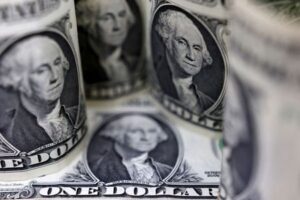By Pete Schroeder
WASHINGTON (Reuters) -The U.S. banking industry recorded higher profits in the second quarter of 2024, but the Federal Deposit Insurance Corporation on Thursday identified several lingering areas of concern including commercial real estate and credit cards.
Profits for the sector were up 11.4% to $71.5 billion in the second quarter, boosted by shrinking expenses and higher non-interest income, the regulator said. However, it also noted that signs of strain in commercial real estate and credit card borrowing had jumped to levels not seen in a decade.
“What we’re seeing this quarter is a continuation of the trend we’ve seen in the last few quarters. Stability by the industry, continued resilience, but underlying vulnerabilities,” said FDIC Chairman Martin Gruenberg in a press conference.
Specifically, the FDIC noted that the non-current rate for non-owner occupied commercial real estate loans, driven largely by office portfolios at the largest banks, rose to 1.77%, hitting the highest level since 2013. Bank supervisors are closely watching the commercial real estate sector for weakness, as banks and borrowers grapple with vacancies stemming from the rise of remote work during the pandemic.
A silver lining on that front, according to the FDIC, is that while the nation’s largest banks face the highest levels of noncurrent CRE loans, those loans are a relatively smaller concentration of their broader portfolios.
On the consumer front, the net charge-off rate for credit cards, effectively the amount of credit card balances banks do not expect to collect, rose to 4.82%, its highest since 2011.
The FDIC said three new banks were added to its “Problem Bank” list, which are firms that supervisors have identified as having weak private ratings. There are now 66 total banks on the list, with assets totaling $83 billion. They account for 1.5% of all banks in the sector, and the FDIC noted that it is typical for problem banks to occupy 1-2% of total banks during noncrisis times.
Bank profits were boosted by shrinking expenses, most notably a $4 billion reduction in reported expenses related to the special assessment banks must pay to help the FDIC recover costs stemming from the bank failures of 2023.
Profits also grew due to $10 billion in one-time gains from equity security transactions by banks. Non-interest expenses were down 2.4% in the quarter, although provision expenses for potential losses climbed, particularly at larger banks, where they were up $3.3 billion, or 30.3% from the prior quarter.
(Reporting by Pete Schroeder, Editing by William Maclean, Alexander Smith and David Gregorio)





